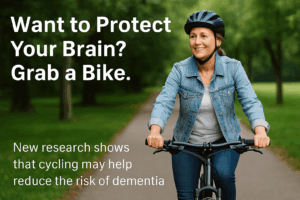New York – In the United States, someone has a stroke every 40 seconds. Strokes – 80 percent of which are caused by a blood clot that blocks blood flow to the brain – are medical emergencies that require immediate attention. The earlier a stroke is recognized and treated, the greater the chance of recovery and avoiding damage that often leads to vascular dementia. In recognition of Stroke Awareness Month, NewYork-Presbyterian is sharing information on stroke risk and prevention. (Continued below video…)
Nearly two million brain cells die each minute a stroke goes untreated. Remembering the acronym BE FAST is an easy way to learn how to recognize a stroke and act quickly to minimize its long-term damaging effects.

As part of its commitment to advancing stroke care, NewYork-Presbyterian now operates a Mobile Stroke Treatment Unit (MSTU). The MSTU is an emergency vehicle specially designed to provide immediate, specialized care to patients who may be having a stroke. The vehicle is equipped with stroke care specialists, a computed tomography (CT) scanner and medications for treating stroke patients on-site.
“The most effective method in saving a stroke victim’s life is to diagnose and treat immediately after a stroke occurs,” says Dr. Matthew Fink, neurologist-in-chief and chief of the Division of Stroke and Critical Care Neurology at NewYork-Presbyterian/Weill Cornell Medical Center and the Louis and Gertrude Feil Professor and chairman of the Department of Neurology at Weill Cornell Medicine. “The MSTU rapidly brings a neurologist and advanced technologies of an emergency room directly to the patient, offering state-of-the-art care that is only moments away.”
Stroke Prevention Tips
Taking the time to make a few simple lifestyle adjustments can save thousands of lives each year.
“Stroke statistics are alarming. It’s the fifth leading cause of death in the United States and the leading cause of serious adult disabilities,” says Dr. Randolph Marshall, chief of the Stroke Division at NewYork-Presbyterian/Columbia University Medical Center. “Strokes kill nearly 133,000 people a year. The good news is that approximately 80 percent of strokes can be prevented.”
Several lifestyle changes can greatly reduce the risk of stroke:
- Reduce salt intake. High blood pressure is one of the leading causes of stroke. Cutting back on salt is one of the most significant steps to maintaining or lowering blood pressure to a healthy level of 120/80 or below. Try flavoring your food with a variety of spices that may be healthier than salt.
- Eat a heart-healthy diet. Maintaining a healthy balance between your good cholesterol (HDL) and bad cholesterol (LDL) is the best way to prevent high cholesterol, heart disease and the increased risk of stroke. Cholesterol levels should remain at 200 mg/dl or below.
- Stop smoking. Smoking is bad not only for your lungs, but your brain as well. A smoker is at twice the risk of having a stroke because smoking damages blood vessels, raises blood pressure and speeds up the clogging of arteries.
- Exercise. If you are obese or overweight, your risk for high cholesterol, high blood pressure and diabetes increases and so does your risk for stroke. Extra weight places an added strain on your entire circulatory system, but aerobic exercise helps reduce stroke risk and can be a good way to lose those extra pounds and substantially improve your health.
Certain populations are at a higher risk of having a stroke even after making the proper lifestyle changes. These include adults 55 years of age or older, African-Americans and Hispanics, those with a family history of stroke, and people who have already had a stroke or a transient ischemic attack (mini stroke). In addition, women are more likely to die from a stroke than men, although attacks are more common in men.












What percentage of patients get fully recovered from tPA delivery in the ambulance? Better than the national average of 12%? They don't care about the care that is provided, they want to know the results of that care.